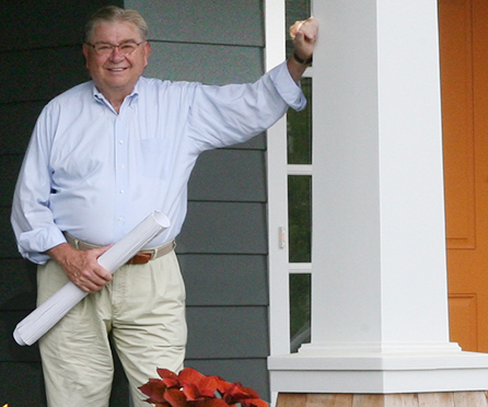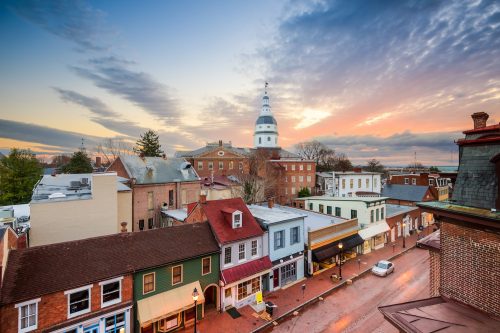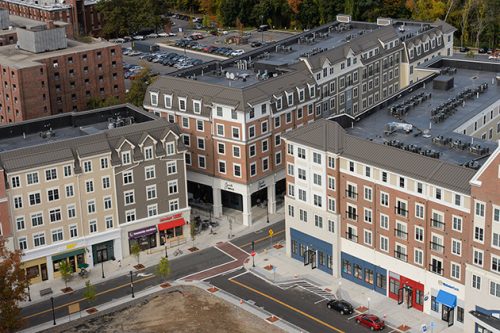 On Thursday, February 16th, the Baker Program in Real Estate hosted Lou Marquet, Principal at Leyland Alliance, during the weekly Distinguished Speaker Series. Lou has over forty years of real estate related experience, from his time in youth as a carpenter, to his present-day development of large scale, mixed-use projects. His presentation touched up on many different subjects including his views on the interpretation of new urbanism and brief case studies on his Storrs Center and Warwick Grove developments. Lou is a pioneer of new urbanism and began his presentation talking about the philosophy behind the movement. According to Lou, the idea of new urbanism is place making. “How do we get people to come together,” he asked students, “and get them to enjoy being some where?” Lou then went through numerous cities and demonstrated how they have embraced new urbanism, whether intentional or not. Cities such as New Haven, Charleston, Hartford, Savannah, and Annapolis were presented. By creating walkable, livable lifestyle centers, Leyland Alliance aims to impact the community and to bring people together. Part of his project’s distinction comes from the architecture behind it. Lou demonstrated how Leyland Alliance designs storefronts and sidewalks to promote transparency and walkability. The other factor of new urbanism is building a community. That comes from putting together events such as concerts and creating spaces for people to meet and relax.
On Thursday, February 16th, the Baker Program in Real Estate hosted Lou Marquet, Principal at Leyland Alliance, during the weekly Distinguished Speaker Series. Lou has over forty years of real estate related experience, from his time in youth as a carpenter, to his present-day development of large scale, mixed-use projects. His presentation touched up on many different subjects including his views on the interpretation of new urbanism and brief case studies on his Storrs Center and Warwick Grove developments. Lou is a pioneer of new urbanism and began his presentation talking about the philosophy behind the movement. According to Lou, the idea of new urbanism is place making. “How do we get people to come together,” he asked students, “and get them to enjoy being some where?” Lou then went through numerous cities and demonstrated how they have embraced new urbanism, whether intentional or not. Cities such as New Haven, Charleston, Hartford, Savannah, and Annapolis were presented. By creating walkable, livable lifestyle centers, Leyland Alliance aims to impact the community and to bring people together. Part of his project’s distinction comes from the architecture behind it. Lou demonstrated how Leyland Alliance designs storefronts and sidewalks to promote transparency and walkability. The other factor of new urbanism is building a community. That comes from putting together events such as concerts and creating spaces for people to meet and relax.

Lou then talked about one of his projects, Warwick Grove. Warwick Grove is a 215-unit neighborhood development done by Leyland, and headed by him. The project utilized some of the nation’s top New Urban architects in coming up with a place for older, active adults to live, sleep and play. While ultimately it was a success, the project struggled at first. Approvals were difficult to come by, and ultimately Leyland agreed to make the neighborhood a place for senior citizens. When the project finally came to completion, the economy crashed, with the number of properties sold per year dropping from 30-40 to under 20. But overall the project was profitable for the developers, and Lou credited it for being one of the nation’s first demonstration projects for PATH, a program that incorporates and tests sustainable technologies in home building.
He then went on to one of his most recent developments. Storrs Center. Lou began his presentation on the project with a problem that was facing UCONN. “The state noticed all the best students were leaving,” Lou says. “After running a study, they found out that 80% of the top 25% of high school students were leaving

Connecticut for university, with only 20% moving back to the state after”. The biggest problem for UCONN, it appeared, was the lack of a “college town”. Leyland won the rights to develop what later became Storrs Center for the city because they proposed building a real place. “What we focused on was actually building a photograph,” points out Lou. They put in sprawling retail that allow people to relax, walk through, and have a general living space so that people want to stay. The photos Lou showed students demonstrated the vast changes the area took, from basic strip retail centers, to beautiful areas with trees, meeting spaces, and dining.
Lou provided many insights and viewpoints to Baker students. For many, this was the first exposure they had to the idea of new urbanism. The students and faculty of the Baker Program in Real Estate thank Lou for visiting the program and appreciate the 40 years of insight he provided to students.
